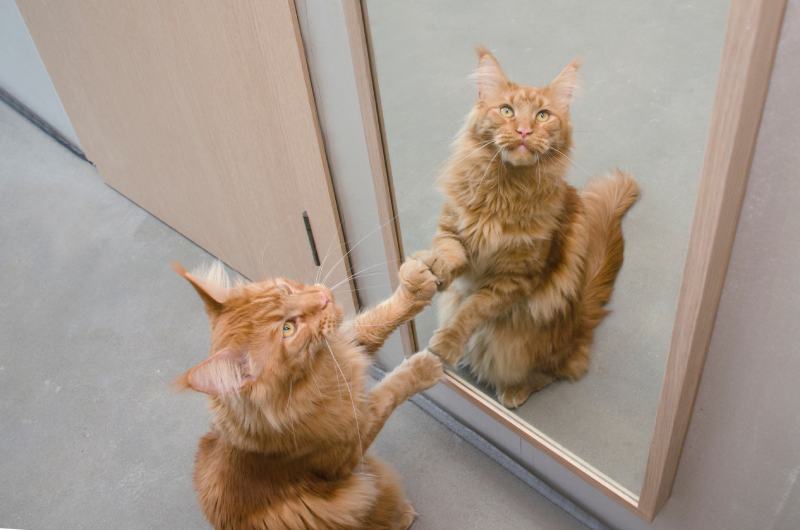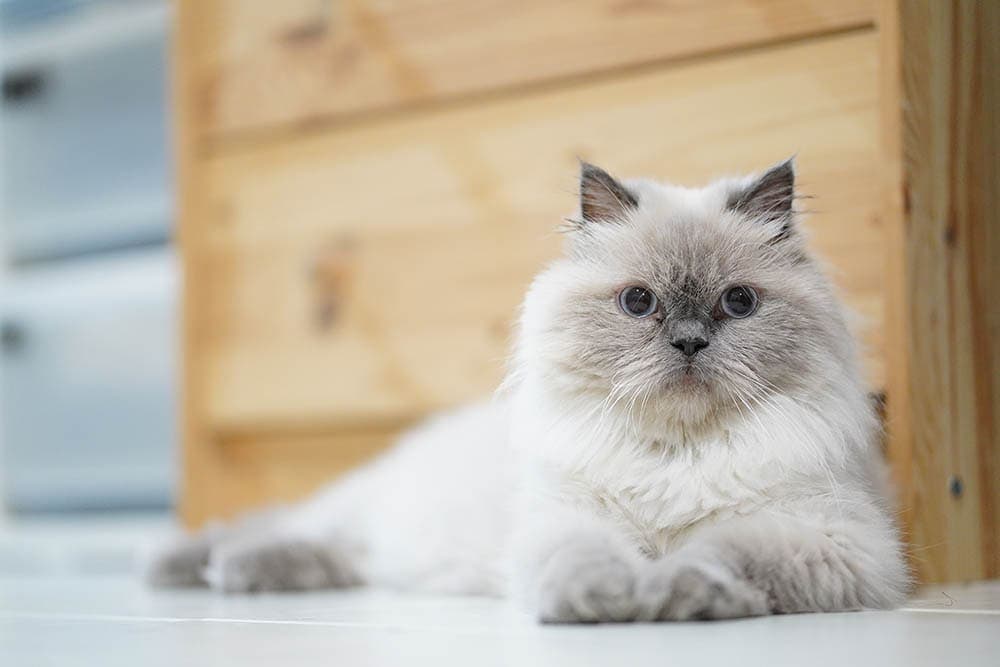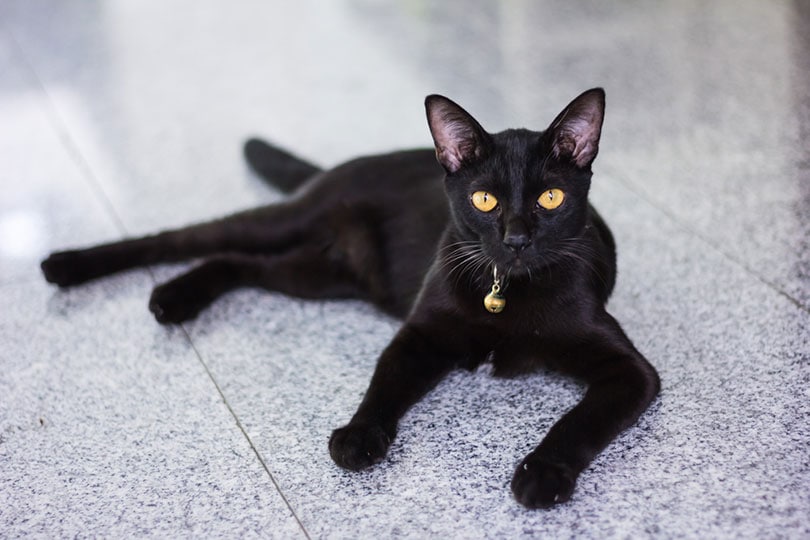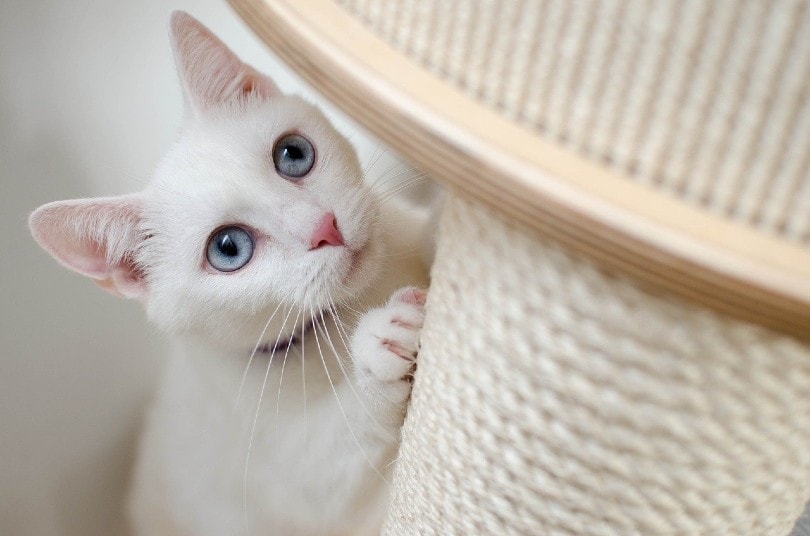Why Does My Cat Paw at Smooth Surfaces? (5 Likely Reasons)

Updated on

It’s a pretty common behavior that all cats seem to share—a love for pawing at smooth surfaces like hardwood floors or dressers. But why? Well, let’s take a look at some top likely reasons your cat can’t stop pawing at the nice new dresser you got from IKEA (you know, that you probably spent way too much money on, but hey, cats).
So, without further ado, here are five likely reasons your cat can’t get enough of pawing at smooth surfaces.
The 5 Reasons Why Your Cat Is Pawing at Smooth Surfaces
1. To Mark Territory
One of the top reasons cats paw at surfaces is to mark their territory. Cats have scent glands in their paws, so they leave behind their unique scent when they scratch a surface. This helps them feel secure in their environment and helps to ward off any competing cats lurking around.
While it can be stressful when your cat decides your dresser is the perfect spot to mark their territory, it’s pretty harmless behavior in the grand scheme of things.
To find out how to stop your cat from clawing up your nice furniture, be sure to read till the end for tips on how to keep your cat’s claws in check.

2. To Stretch
When your cat is pawing at smooth surfaces, it may just be trying to stretch out its body! The action of scratching and clawing is a great way for cats to stretch their back, shoulders, and legs.
Doing so helps to keep their muscles flexible and can even help with joint health—not to mention it feels pretty good! So, if your cat is pawing at surfaces, it could just be trying to relax and stretch out rather than destroy your home. Of course, if you want to keep your cat from clawing up surfaces, make sure to read on for tips.
3. Get Rid of Stress
Just as humans have activities they do to help them destress and relax, cats have their own set of ways to calm down.
Pawing at smooth surfaces may be one of your cat’s favorite methods to help them take their mind off things and relax. When they do this, it’s more of an instinctual behavior that cats tend to do when feeling anxious or overwhelmed.
As such, your cat may not even be aware that they are pawing at surfaces; they’re just trying to cope with their feelings in the best way they know how.

4. Claw Care
Cats use a variety of ways to keep their claws in check, and, you guessed it, one is pawing at smooth surfaces. By doing this, they can sharpen and keep their nails filed down.
It’s also a great way for them to get rid of any dirt or debris that may have gotten stuck underneath their nails.
Cats like claws to be clean, sharp, and healthy, hence why they love scratching those surfaces. The good news is that the surfaces in your home don’t have to be sacrificed in the name of claw care—read on for some useful tips!
5. It’s Enjoyable
Your cat may be clawing at smooth surfaces isn’t any of the above but instead is simply something they really enjoy doing.
Just like humans, cats can find certain activities enjoyable—and one of those activities may very well be scratching smooth surfaces.
It can be fun for them and even function as a form of playtime where they can practice their hunting and stalking skills on unsuspecting dressers. Moreover, it likely just feels good for your cat to do so.
Whatever the reason may be, keep reading to find out about some useful tips for preventing your cat from scratching up your furniture.
Tips to Train Your Cat to Stop Pawing at Smooth Surfaces
Now that you know some of the reasons your cat may be pawing at smooth surfaces, let’s talk about how to prevent them from doing so.
The good news is that there are plenty of tips and tricks you can use to keep your cat’s claws in check, even when they are feeling stressed or itchy. Here are some of the best ones:
Provide Cat Scratching Posts and Toys
No matter why your cat is pawing at smooth surfaces, the most important thing you can do is provide them with plenty of options for appropriate scratching surfaces. This means buying cat scratching posts and toys that they can claw at safely.
You can also make DIY versions of these items if you’re feeling crafty! Providing your cat with a variety of scratching materials is key to helping them stay away from your furniture.
Trim Your Cat’s Claws Regularly
Another great tip is to trim your cat’s claws regularly. This not only keeps their nails in check but also makes them less likely to paw at surfaces as much. It’s recommended that you trim your cat’s claws once or twice a month to keep them at an appropriate length.
Use a Spray Bottle and Treats
If your cat is already pawing at smooth surfaces, you can use a spray bottle full of water to train them not to do so. Simply spray them with water when they start to paw and then reward them with a treat. This should help your cat learn that scratching furniture is not acceptable behavior.
By following these tips, you’ll be well on your way to preventing your cat from pawing at smooth surfaces and protecting your furniture in the process. With some patience and love, you should be able to help your cat find more appropriate ways to channel their clawing needs.
Conclusion
As you can see, there are several potential reasons why your cat may be pawing or clawing at smooth surfaces, and it’s important to understand why they’re doing it to prevent them from doing so.
Cats need outlets for their natural behavior, and by providing them with ample scratching alternatives and care, you can help redirect their focus away from your furniture.
- See Also: Why Are Cats So Flexible
FeaturedImage Credit to: Irina_Kulikova, Shutterstock









